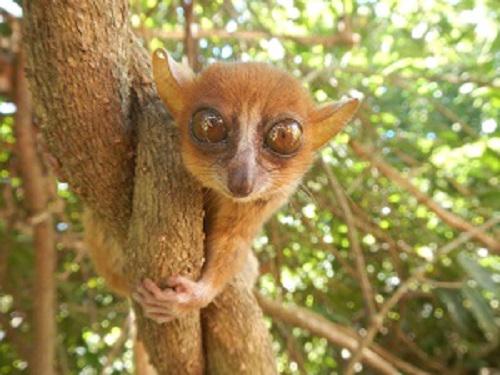Dan Hending
This project investigates the behavioural ecology of the Sambirano Mouse Lemur, Microcebus sambiranensis, an Endangered primate of North-Western Madagascar that has never before been studied. Its’ vocal characteristics, sleeping site ecology and home-ranging will be investigated to fill crucial gaps in the understanding of the species and to facilitate the lemur conservation efforts currently ongoing within the Sahamalaza-Iles Radama National Park by local NGOs.

The Endangered Sambirano Mouse Lemur, Microcebus sambiranensis, has a small, fragmented extent of occurrence and is restricted to only a few small sites in North-Western Madagascar. This species has never before been studied and therefore nothing is known of its’ behavioural ecology. Lemur conservation NGOs such as The European Association for the Study and Conservation of Lemurs (AEECL) and Mikajy Natiora rely on a detailed understanding of the behavioural ecology of the species that they protect in order to develop their population monitoring programs and conservation strategies. This project endeavours to reveal this information to improve Sambirano Mouse lemur conservation.
The presence of M. sambiranensis within the Anabohazo Forest of the Sahamalaza-Iles Radama National Park was first observed in 2014 by the local NGO Mikajy Natiora. As this new population is within a protected area, which improves its conservation potential, it is an ideal site in which to determine the behavioural ecology of this species. Mikajy Natiora and AEECL, two experienced Malagasy conservation organisations, are both closely involved with the planning and execution of this project and its’ findings will enhance their understanding of the Sahamalaza peninsula’s biodiversity.
This investigation is focusing on the home-ranging behaviour, sleeping site micro-habitat ecology and species vocalisations of the Sambirano mouse lemur because this information is particularly essential for future monitoring of the species’ population density. In order to obtain this information, the projects’ methodology involves the radio-collaring of eight mouse lemurs. This will enable the research team to:
Radio-track collared individuals so that home range GPS waypoints can be logged. The AEECL and Mikajy Natiora will be able to use this data to gain an understanding of population density and viability.
Investigate the specific micro-habitats and tree species being used for sleeping site construction. This information will facilitate the AEECL’s ongoing long-term, large-scale reforestation program.
In addition to this:
An acoustic survey of four different major habitat types of the Anabohazo forest will be conducted to investigate habitat preference of M. sambiranensis and to gain an insight of population density. Recorded vocalisations of this species will be used to compile a vocal repertoire which will then be provided to the AEECL who can use it to develop an efficient, low-cost acoustic survey method for remote population density assessment specific for this species.